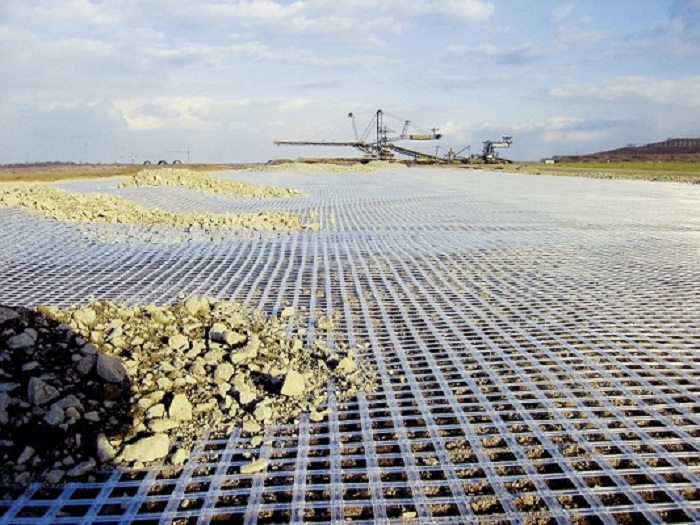Geosynthetics comprise of an extensive range of products available in the market and these can be categorized as Geotextiles, Geogrids, Geonets, Geomembranes, Geosynthetic Clay Liners Geotextile, Encased Columns and Geocomposites.
Geosynthetics are manufactured from different polymers like: polyolefin (Polypropylene and Polyethylene, with a very high chemical resistance) or polyester (PVA, glass, aramide). Usually in the overall project, geosynthetics are categorized through their role or function in the design or project such as any other engineering materials. There are 7 functions recognized for geosynthetics and they include the following: filtration, separation, reinforcement, drainage, barrier; surface erosion control, and protection.
At the beginning, geosynthetics were not used in critical applications; they were mainly used as ‘buffer’ for safety, usually to cater for incorrect installation or poor quality workmanships. Almost 100 years later, geosynthetics are now widely used in many civil and mining sectors as a key-role player in the overall project, which can be the reinforcement of roads, lining of a heap leach pads, or just a simple erosion control on the shoreline (embankment on soft soils, bridge abutments, noise barriers, flyovers, reinforced load transfer platforms LTP on piles). Significant cost savings and improvement of the whole structure can be achieved thanks to the use of Geosynthetics.
Geosynthetics in the African Market
The geosynthetics market in Africa is growing steadily. While a large portion of the market is limited to mining and allied sectors, geosynthetics has been adopted by various applications in the infrastructure, environmental (landfill) and hydraulic (shore protection, scour protection in harbours, dykes,) sector. Early adoption of geosynthetics in this market was in mining but has proven its benefits in various construction applications which include: rail construction, paved and unpaved roadways, reinforced soil walls (asphalt reinforcement) among others.
Geosynthetics has emerged as a recognized technology in Africa because it is slowly reducing and replacing the burden on natural resources. As Africa’s infrastructure develops and urbanizes, the load on natural resources will increase. Geosynthetics can be used in a wide variety of infrastructure challenges, right from mining applications to ground stabilization in pavements, container yards, and many more.
For instance, geotextiles can be placed as a separator creating a stable platform for the contractor to work. Geogrids can improve the quality of the pavement layers in order to avoid the use of crushed stone, while geocomposite for drainage can intercept seeping water and geomembranes helps in avoiding any land fill leachate getting into the ground.
Also Read: Geosynthetics: Predicting the future
Dam liners
Dam liners are essential for preventing water loss from reservoirs and ponds; however it is essential that high quality dam liners are purchased if a long term waterproof solution is required. Predominantly manufactured from (high density) Polyethylene and Polypropylene, these geo membranes are used extensively for the containment of liquids, solids and gases in a variety of applications, including Attenuation Tanks, Flood Alleviation, Dam Liners, Gas Barriers, Landfill baseliners & Capping and process water ponds.
These liners will normally be provided in rolls which have to be welded together. This requires an experienced welding technician using the correct welding machinery; so as to ensure a proper bond is attained at the seam. Low quality brands offer poor adhesion properties, resulting in leaks from the seams over time. Replacing or repairing leaking linings can be very expensive, in addition to being time consuming and inconvenient. A little extra investment in a high quality liner should keep repair costs to a minimal level. (Proper installation of the liner as well as careful procedures for the installation of cover layers is crucial).
Challenges in the Market
The biggest challenge faced in this market is awareness. Like many new technologies, enablement and adoption becomes a challenge. Especially in developing countries where exposure to these products are minimal, it is important to study and understand the use of geosynthetics.

